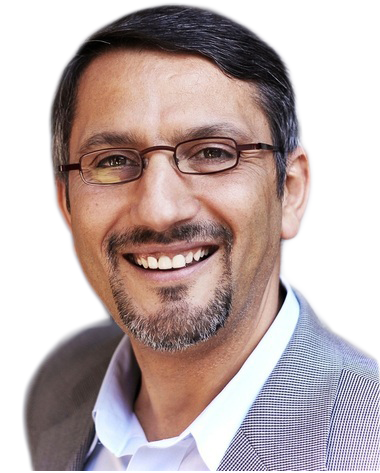A ‘shining city upon a hill’ is one of the most enduring metaphors for America’s self-constructed image of itself in the world, pillar in identify formation and the crafting of larger than life purpose religiously laden with inescapable inferences. In a Farewell Address delivered on January 11th, 1989, the late U.S. President Ronald Reagan framed his long public service career stating, “I’ve spoken of the shining city all my political life.” The metaphor is heavily imbued with religious meaning and symbolism through working a variant of Jesus’ own Sermon on the Mount, “You are the light of the world. A city set on a hill cannot be hid. Nor do men light a lamp and put it under a bushel, but on a stand, and it gives light to all in the house. Let your light so shine before men, that they may see your good works and give glory to your Father who is in heaven.” (Matthew 5:14-16)
America, in this often used metaphor, is posited as a religious and historical moral project over coming odds to create ‘the land of opportunity’ as well as the beacon of hope, ‘the light of the world’, which all humanity must turn toward and aspire to emulate. The metaphor takes for granted the long and complex painful history that made America what it is today; blood soaked fields, cities and streets with strewn native, black and brown bodies expiring while building the country but never paid a days worth of honest work by the settling colonial master.
‘The shining city upon a hill’ makes it possible to keep eyes fixated upward and never permitted to look down at the human carnage visible from all sides below. Keeping eyes fixated upward does not prevent the stench coming from decomposing human shapes, biologically active but commodified into organic and pure material, lifeless matter, devalued and disposed of as the permanent inanimate animate objects programmed by modern wizardry into a racial matrix of meaning and value in the colonially constructed ‘shining city upon a hill’.
The pinnacle of ‘the shining city upon a hill’ is firmly inhabited by Whiteness. The ‘city shining upon a hill’ was emptied of the natives by means of Genocide while down below in the valley, the plantation space, all the black, brown and yellow faces looking upward in the hope of being called uphill by the ‘master’ into the mountain top to experience proximity and to be touched by Whiteness, the ‘human divine’. Consequently, blackness is given meaning only as a by-product or proximity to Whiteness, while always made to be represented with negative attributes, criminal intent, and incapacities i.e. the ideal counter weight to the evolutionary perfected White. White is an invented category in the same way all other racial categories are a fabricated social phenomena but it is still vested in power and meaning.
The shining White city upon a hill is erroneously vested with biblical, religious meaning and a theologically crafted purpose so as to make an immediate and undisrupted ontological link between God’s purpose, skin color and racism. The White, an ideological and epistemic concept not mere skin color, in the racist city upon a hill becomes the flag bearer for divine purpose to the exclusion of all other human beings. In holding tight to this epistemic as a way to keep power, Whiteness vested in race and racism thus represents the highest forum of compounded ignorance from a theological point of view, since it is founded upon a contrived supposition that is diametrically opposite the firmness of God’s well-established articulation of human equality. Black History Month, while every day should be a Black history filled day, is indeed a moral, religious and intellectual project to challenge the ‘divine’ edifice of Whiteness and replace it with the true, real and authentic ‘divine’ purpose rooted in human diversity as a constitutive, productive and foundational from the beginning.
Just as the Pharaoh deified himself and demanded of the Egyptian total obedience and surrender to his worldly power, Whiteness within the racist global epistemic is the modern Pharaonic deity demanding human surrender to its whims. Priestly class that served and benefited from the system while at the same time blaming the made inferior Egyptian and setting them up as the inferior in the first place then articulating rationalization for Pharaoh’s status and power over the ‘otherized’ sub-human population. Today’s priestly class serving at the foot of Whiteness works hard to keep the edifice intact and undertakes a sophisticated process of blaming victims despite being in total control of the structured and highly efficient victimization process.
The epistemic of Black History Month is a notion centered on a deeply rooted human yearning for an illuminated city endowed with divine purpose through prophetic figures emerging humbly and unpretentiously from the ground-up while making sure to embrace as brothers and sisters the poor, the immigrant, the stranger, the dispossessed, and the meek of the earth. Certainly, Black History Month is about celebrating contributions large and small of African Americans and Africans in general but at a deeper ontological level it is a project of undoing Whiteness that is ascribed with ‘divinity’ clothed ina theological garb that is racist and idolatrous at the foundation. Dismantling the racist human god so as the conscious human may emerge and the Real, Just and Merciful God is re-centered in the world. It is about rethinking the basis through which humans are sadistically classified by a trans-historical racial matrix that operates on many levels and constantly engages in eraser of the authentic self in darker and browner ‘races’ then masterfully stuffing them with self-hate so as to make all aspire to be White inwardly and manifest it in conduct outwardly.
In this regard, Black History Month is about resistance against and writing Africans and African American narratives into the pages of self-history first then history in general as well as celebrating the struggle against racism and constant fight against multiple modes of erasers. At times, the eraser includes contesting the terms, names and attributes used by communities to describe themselves as the case of using African American in the U.S. context.
In America, the term African American is used to describe a person who in an earlier context or in some countries are still referred to by the term Black, thus focusing on skin color as the only marker of identity. In this case, using African American is in a way to make an immediate connection and express that the passing of time does not diminish nor supplant the yearning of a person/s to their ancestral homeland and more so if they were forcefully and involuntarily separated from it.
The term African American points to the yearning and desire to be one with Africa, and in my own view, represents a constant search for meaning, authenticity, wholeness, completeness and a lost distant collective family that otherwise if not asserted would cause the individual to be one without a history. It is easy to argue for one term or the other but one is marked by skin color, Black, while the other, African America, identifies a geography, a region with rich human experiences and multiplicity of civilizations, nay the site and location of the beginning of mankind’s worldly existence.
A people’s history is the total sum of each and every individual contribution to the society through the passing of time, which then gets reinterpreted by every generation to make meaning of their present circumstances and respond with appropriate solutions. Thus, African Americans and African history, in general, is about writing onto the pages of the world one’s own narrative and story that can provide a meaning for the past, fashion the needed tools to contend with the present and prepare for an unknown and yet to be arrived at future.
In this Black History Month let’s celebrate and honor all African Americans and Africans in different countries and regions, those living and those who died on the shores of Africa, in the Middle Passage and once arrived into the slave institution or in post-colonial servitude in the northern colonial motherlands. Considering what African Americans and Africans (past and present) been through yet continue to love and struggle for a better world we awe them a collective gratitude for resisting and being the quintessential human when other humans have forgotten how to be human or how to treat another human in this modern commodified world.
In celebrating Black History Month, we remember the past while honoring the dignity, perseverance, struggle, and creativity of the people that aspired to take ‘us’ all to the mountain-top to celebrate in brotherhood and sisterhood while facing real bullets or bullets of indifference, assassinations, real and mental whips, water cannons, defamation and trained dogs. Judge not what you see of African Americans or Africans today for generations after generations they have been made to live in physical iron masks, collars, leg shackles and spurs but never stopped resisting and constantly being humans and speaking in prophetic voices.
Today, the structures and shackles from the past have been transformed into a modern system inflecting upon African Americans and Africans similar physical and mental punishment in so many ways that require books to elucidate. The iron masks of miss-education, collars and leg shackles of the modern prison industrial complex, as well as spurs of all types and kinds to maintain the racial structure intact and the racially designed city upon a hill emptied of human dignity and diversity.
Indeed, behold in Black History Month we honor a mighty people that can go through this and continue to live, love, laugh, teach, grow families and be a global creative force like no other! We must bring to an end the plague of racism that causes indifference to black suffering and dedicate all of our energies a new to see to it that African Americans and Africans can breathe since in today’s world they can’t breath and their lives don’t matter.
Today more than ever we must doubly affirm, in words and deeds, that Black lives do matter in cities, towns and regions around the globe. We must strive to transform ‘the shining city upon a hill’ into a real dignified and diverse city that emerges from the valleys of indifference, forgotten inner cities, collapsing schools and locked gates of human potential. A city that says loud and clear, ‘let my people go’ by opening the prison gates and unlocking the locked-up human potential made into a profit generating scheme for the few rather than a prophetic voice for change. Indeed, the shining city from the valley is what Black History Month is about and we all should join for it’s a spacious, beautiful and a diverse abode made of real humans.

